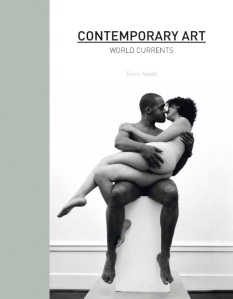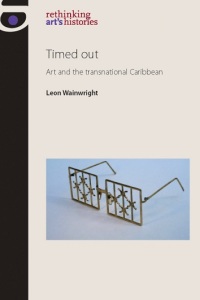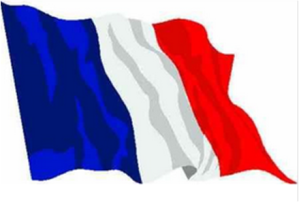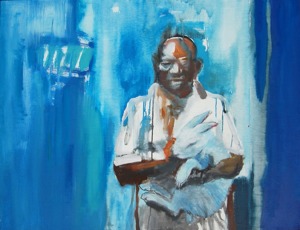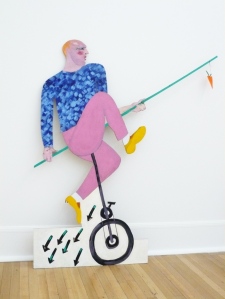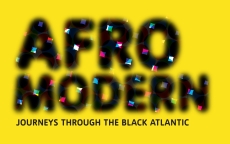After last weeks break we are getting back on track this week with some in-depth talks from the Curating in Africa Symposium which was held at Tate Modern in October 2010. “This symposium brought together leading curators involved in some of the most active areas of artistic production in Africa to address the state of curatorial practice in this region.”
There are four videos from the symposium available online. To access these click on the video image link below which will take you directly to the page on Tate’s site where you can watch these. If you have a problem accessing the videos when you first press play – try refreshing the page and then clicking play again.

Below is some more detailed information about the symposium and the speakers who took part in the first day’s open symposium:
“The Curating in Africa symposium, organised by Kerryn Greenberg (Curatorial Department, Tate Modern) in collaboration with Tate National, and funded by the World Collections Programme (WCP), brought together seven leading curators involved in some of the most active areas of artistic production in Africa to address the achievements of and challenges facing curators working in Africa today.
The participants were Meskerem Assegued (Zoma Contemporary Art Center, Ethiopia); Raphael Chikukwa (National Gallery of Zimbabwe); Marilyn Douala Bell (Doul’art, Cameroon); N´Goné Fall (Independent Curator, Senegal); Abdellah Karroum (L’appartement 22, Morocco); Riason Naidoo (South African National Gallery) and Bisi Silva (CCA Lagos, Nigeria).
Day One – Open Symposium
The first day was attended by approximately 100 invited curators, artists, graduate students, art historians and collectors and consisted of 30 minute presentations by each of the speakers on the context they are working in and a recent curatorial project.
N’Gone Fall, an independent curator who works between Dakar and Paris emphasized the importance of exhibitions that deal with history, geography and politics. She also talked about the benefits of collaboration, particularly with regards to Contact Zone an exhibition at the National Museum in Mali.
Raphael Chikukwa, the curator at the National Gallery of Zimbabwe focused on the history of his organization and its resilience during times of political instability. He talked about the challenges of fundraising and developing new audiences, as well as the importance of opening the debate and increasing the visibility of Zimbabwean artists internationally. The Harare Festival of Arts will take place from 26 April – 2 May 2011.
Marilyn Douala Bell spoke about the importance of site-specific projects, especially in a city without museums. She talked about some of the ways Doual’art has supported artists and engaged the local community over the past two decades. The next edition of SUD, organized by Doual’art, will open on 4 December 2010.
Bisi Silva, founding director of CCA Lagos spoke about Nigeria’s recent history and the infrastructural, physical and intellectual deficit Nigeria was left with after the dictatorship. She talked about the importance of professional development opportunities and the limited number of exhibition catalogues and monographs published in Africa. She also presented several exhibitions she has curated atCCA Lagos, including the inaugural exhibition Democrazy, Like a Virgin, and Art, Fashion and Identity. She also talked about J.D. Okhai Ojeikere’s exhibition which opened at CCA, Lagos on 1 October 2010. A mini retrospective of Ojeikere’s photographs will open at Kiasma, Museum of Contemporary Art, Helsinki in April 2011.
Riason Naidoo, Director of the South African National Gallery (SANG), gave an overview of his institution’s history and stressed the importance of resisting the pressure to produce exhibitions that may have popular appeal, but little gravitas. He talked in detail about 1910–2010 From Pierneef to Gugulective, the first exhibition he curated at the SANG, and the importance of creating discursive spaces.
Meskerem Assegued, founder of Zoma Contemporary Art Center in Ethiopia, discussed the impact of the military government on the Ethiopian art scene in the 1970s and 1980s. She presented Temporary, a public art happening she organized in Meskel Square and Green Flame, an exhibition in Vienna which included Julie Mehretu, Stephan Vitiello, and Elias Sime. Assegued is currently working on a major exhibition of Elias Sime’s work and a seminar Where do we go from here that will take place in Addis Ababa in January 2011.
Abdellah Karroum talked about studying abroad and not knowing one’s home on returning. He introduced various projects that he organized which enabled him to reconnect with Morocco. He discussed the genesis of Apartment 22 and the challenges of financing independent spaces.
The day ended with a roundtable discussion which touched on the following topics: arts education, censorship, the development of local audiences, and the internationalisation of exhibition programmes.”
There is also some information available on Tate’s site about a closed workshop involving 30 curators which took place on the following day. The themes addressed in this workshop included:
The Current State and Future of Art Museums in Africa
Alternatives to the Museum: Independent Spaces in Africa
The History and Sustainability of Biennials in Africa
How to Shape the Future
To read more about any of these discussion or to find out about the outcomes of the symposium click here.
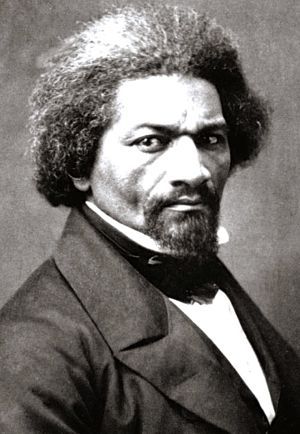 Frederick Douglass, famed abolitionist and former African American slave, is well known in the United States for his work as a social activist. His travels in Britain however, are often neglected on both sides of the Atlantic, but the Nubian Jak Community Organisation hopes to change this. Created by Jak Beula, this non-profit organisation has installed numerous heritage plaques to African Americans and Black Britons, including Malcolm X and John Archer (among others). On the 20th February, a plaque to Frederick Douglass will be unveiled in Kensington, at the former home of British abolitionist George Thompson. (Whilst lecturing in London, Douglass stayed at Thompson’s house.)
Frederick Douglass, famed abolitionist and former African American slave, is well known in the United States for his work as a social activist. His travels in Britain however, are often neglected on both sides of the Atlantic, but the Nubian Jak Community Organisation hopes to change this. Created by Jak Beula, this non-profit organisation has installed numerous heritage plaques to African Americans and Black Britons, including Malcolm X and John Archer (among others). On the 20th February, a plaque to Frederick Douglass will be unveiled in Kensington, at the former home of British abolitionist George Thompson. (Whilst lecturing in London, Douglass stayed at Thompson’s house.)



